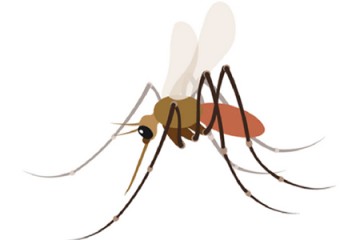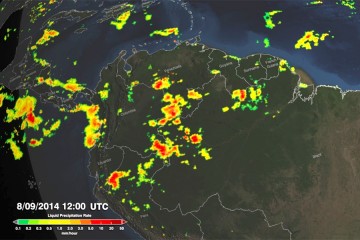- Name
- Barbara Benham
- bbenham1@jhu.edu
A team led by scientists from the Johns Hopkins Bloomberg School of Public Health has sequenced and annotated the first complete mitochondrial genome of Anopheles funestus, a major transmitter of malaria in sub-Saharan Africa. This milestone, published in June in Scientific Reports, offers a glimpse inside the insect's genetic diversity, ancestral history, and evolution—information that researchers might eventually exploit to develop new ways to prevent this deadly disease.
Study leads Douglas E. Norris, a professor in the Bloomberg School's departments of Molecular Microbiology and Immunology and International Health, and Giovanna Carpi, a postdoctoral fellow with the Johns Hopkins Malaria Research Institute at the Bloomberg School, have found that the vast majority of research into malaria vectors, or transmitters, has focused on Anopheles gambiae, considered to be the primary vector of this disease.
However, although An. funestus is a close second—responsible for helping to transmit most of the world's approximately 216 million cases that cause half a million deaths annually—few genetic studies have focused on this species due to its comparative difficulty to rear in the lab.
"An. funestus is definitely understudied, even though it's a critical malaria vector," says Norris, who is also on faculty at the Johns Hopkins Malaria Research Institute. "We need to know more to move forward."
As a pivotal step toward better understanding this mosquito species, Norris and his colleagues decided to sequence its mitochondrial genome—the DNA inside mitochondria, the cellular organelles that supply power to the cell. Compared to the genome derived from the cellular nucleus, the mitochondrial genome tends to be smaller in most organisms and is passed down the maternal line rather than from both parents, providing a clearer look at ancient ancestry and population-level distinctions.
The researchers started by capturing An. funestus mosquitoes from locations in Tanzania; the Democratic Republic of Congo; and Zambia, where the federal International Centers of Excellence for Malaria Research project maintains a study site. After extracting mitochondrial DNA from 43 of these insects, Norris and his colleagues deep sequenced and analyzed it.
Sophisticated analysis of the 43 full-length "mitogenomes" pointed to a long evolutionary history of An. funestus. Distinct differences at 41 sites along the insects' mitogenomes divided them largely into two different lineages, confirming earlier work from another laboratory. Estimates based on how quickly mitochondrial DNA mutates suggest that these two lineages, dubbed simply lineage 1 and 2, split from a common ancestor about 500,000 years ago, during the Pleistocene period. Although both lineages were previously identified in Zambia, lineage 2 wasn't known to exist in Tanzania.
A further look at lineage 1 suggests that it is composed of at least two distinct genetic groups itself, Norris adds. "This suggests that An. funestus has a lot more genetic diversity than has ever been documented," he says.
In Zambia and Tanzania, at least, these two lineages are sympatric, existing at the same place at the same time. However, this genetic diversity suggests that the species might be splitting into separate species. Although this process that can take a millennium or more, Norris explains, the two lineages might already be displaying differences in their ability to carry organisms that cause malaria—protozoa in the Plasmodia genus—behavior in foraging for blood, or insecticide resistance. These differences could potentially be used to develop new vector-based strategies to prevent malaria transmission.
The mitogenome diversity within this species could also eventually be used to better understand how different mosquito populations are interbreeding and potentially sharing genes that could be useful or harmful to malaria-control efforts—and whether interventions directed at this vector are successful, Norris adds.
"Right now, having a complete mitochondrial genome for An. funestus is interesting from an academic and evolutionary view," he says. "But eventually, we might be able to use what we've found to build whole new strategies to combat malaria."
Posted in Health
Tagged malaria, microbiology, mosquitoes










